Oh no...i just typed up a reply and my AVG update closed my browser!

now i have to retype it ALL...sorry if it all sounds a bit rushed now!
Hi all,
thanks for your comments thus far, really appreciate it. Sorry if the website has been confusing, just please bear in mind that the blog section was written only specifically about SSPs and Tahitian pearls, as by that time we had already stopped dealing with FW and akoyas.
A lot of what I have written is based on local experiences here in the Philippines. So maybe it does not sound "universal" enough.
I am not sure what kind of dye has been used in the pearls sold at markets locally here in the Philippines, but I have had people ask me why their golden SSPs have faded or change colour over time. A dyed golden SSP (a lot of times sold as natural colour SSP) can retail for as little as USD 47 here, and we are talking about a good-size, minimum 13mm to 14mm range. Some have also complained that their white SSPs bought at markets here lost lustre after a year or so. The time varies, usually anywhere from a year to 5 years. Some say longer. A lot of the local vendors here that I have spoken to claim to have gotten their SSPs from Japan/Japanese wholesalers. There are also claims that they actually buy (some would say leftovers) from the HK fair. But I don't know if they are telling the truth.
I also have a strand of akoyas (A+ grade) that had average luster and of pinkish colour turn into low luster and brownish-pink colour in a matter of 8 months. A friend of mine who owns a nice strand of akoyas bought from 10 years ago has kept it in her safe (never worn), and has changed to a greyish champagne colour. However it's important to note that it did retain its lustre.
I have myself come across dyed jet black Tahitian South Sea pearls sold here. At first I was told that they were of a natural colour, and I decided to walk around and have a look at other stalls first. When I came back to the store the second time, they admitted it was dyed (the colour was also too uniform to be natural). The opening price was 75,000 php, but they were willing to lower it down to 45,000 php, which is slightly more than 1000 USD. The strand was a graduated strand from about 11mm to 13mm. In the photos it's the top strand. A vendor here has also sent me photos of some dyed Tahitian pearl earrings, they are jet black in colour. I did not buy any of those jet black Tahitian pearls. I have attached another photo of a lot of pearls that was sent to me via email (claimed to be from the Philippines, but you never know) and that lot is really un-pretty (I find it hard to call pearls ugly), I have no idea if anything has been done to them, so maybe you guys can weigh in on that one.
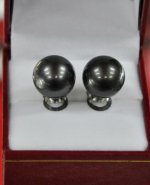
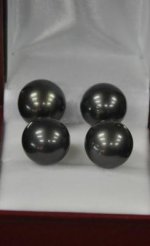
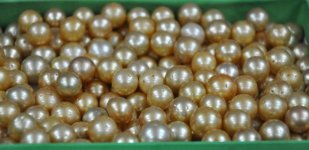
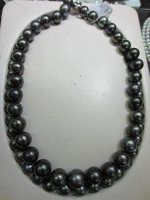
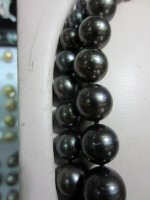
As for literature, yes, I am seriously considering the pearl course. For now, my references on this matter has been the following:
http://www.ganoksin.com/borisat/nenam/golden-pearl.htm
http://www.gemrockauctions.com/docs/gemstone-articles/pearl-treatments
http://www.solitaireinternational.com/images/2110112304pearl_update_oct11.pdf (article by the GIA)
http://www.nationalpearl.com/pearl-education#
https://www.pearl-guide.com/forum/showthread.php?t=157
https://www.pearl-guide.com/forum/showthread.php?t=1558
http://www.imperialpearl.com/EDUCATION/PEARL_TREATMENT/TREATMENT_PEARLS.html
If you have suggestions on how to further improve our website, I highly appreciate it, and could you please email me instead? my email address is
valerene@serenitypearls.com. Thanks!





